In one fell swoop, the Outlander mid-sized SUV will soon be one of Mitsubishi’s few remaining models on sale in Australia.
The company is set to axe the current ASX, Eclipse Cross and Pajero Sport from its lineup due to them not complying with a new Australian Design Rule (ADR) related to autonomous emergency braking (AEB) that comes into force from March 1, 2025.
This means the Outlander, along with the Triton ute, will need to pull a lot more weight for the brand in terms of its sales volume in the coming months before the new Renault Captur-based ASX arrives.
Fortunately, the Outlander is going from strength to strength for Mitsubishi. Last year, the Japanese brand sold 27,613 examples of the popular mid-sized SUV in Australia, which was a new record. It was also enough for it to slide into the top five best-sellers list overall for the first time ever.
The Mitsubishi Outlander has been around for a few years now in its current, fourth-generation form. It was first revealed and arrived in Australia in 2021, and since then there have been several minor spec tweaks and new trim levels introduced.
WATCH: Paul’s video review of the 2023 Mitsubishi Outlander PHEV Exceed
Like its pioneering predecessor, it’s still available with seven seats and either a petrol engine or a plug-in hybrid (PHEV) system – a powertrain type offered by less than a handful of mainstream mid-sized SUVs.
On test here, however, is one of those newer petrol variants, which was first introduced in 2023. Originally dubbed the LS Black Edition, this vehicle is now called simply the Black Edition.
Based on the LS, the seven-seat Black Edition does what its name suggests – it gains a whole heap of black exterior and interior trimmings. It also offers heated microsuede and faux leather trimmed seats with electric adjustment for the driver.
The Outlander competes in the biggest and most hotly contended new-car segments in Australia. Is it still worth considering? Read along to find out.
How does the Mitsubishi Outlander compare?
View a detailed breakdown of the Mitsubishi Outlander against similarly sized vehicles.

Mitsubishi
Outlander
How much does the Mitsubishi Outlander cost?
The Outlander Black Edition is $1750 more expensive than the one-up-from-base LS trim it’s based on.
Despite this, at $42,990 before on-road costs, it’s still more affordable than a number of equivalent seven-seat medium SUV rivals, like the Honda CR-V VTi X7 ($47,300 drive-away) and Nissan X-Trail ST-L 7-seat AWD ($47,565 before on-roads).
| Model | Price before on-road costs |
|---|---|
| Mitsubishi Outlander ES 5-seat | $37,740 |
| Mitsubishi Outlander ES 7-seat | $39,540 |
| Mitsubishi Outlander ES 5-seat AWD | $40,240 |
| Mitsubishi Outlander LS 7-seat | $41,240 |
| Mitsubishi Outlander Black Edition 7-seat | $42,990 |
| Mitsubishi Outlander LS 7-seat AWD | $43,740 |
| Mitsubishi Outlander Aspire 7-seat | $44,840 |
| Mitsubishi Outlander Aspire 7-seat AWD | $47,340 |
| Mitsubishi Outlander Exceed 7-seat AWD | $52,640 |
| Mitsubishi Outlander Exceed Tourer 7-seat AWD | $55,190 |
| Mitsubishi Outlander PHEV ES 5-seat AWD | $57,290 |
| Mitsubishi Outlander PHEV Aspire 5-seat AWD | $63,790 |
| Mitsubishi Outlander PHEV Exceed 7-seat AWD | $69,290 |
| Mitsubishi Outlander PHEV Exceed Tourer 7-seat AWD | $71,790 |
| Mitsubishi Outlander PHEV GSR 7-seat AWD | $73,790 |
To see how the Mitsubishi Outlander stacks up against its rivals, use our comparison tool
What is the Mitsubishi Outlander like on the inside?
Thanks to its elevated ride height, it’s easy to get in and out of the Outlander. You don’t need to step up or down to do so, but rather step in and swivel your hips to get comfortable.
Once you’re in, it feels like you’re in a bigger car than it really is. The dashboard is high, plus the way the bonnet is shaped makes you feel like you’re driving a large SUV.
For some, this big-car feel can be appealing as it gives you a commanding driving position, however, for others it may be bit intimidating.
Compared to the LS trim level, which makes do with cloth upholstery, the Black Edition picks up seats finished in microsuede upholstery with faux leather on the bolsters. They’re actually nicer than full leather seats because they don’t get so hot in the warmer months.
The driver’s seat is comfortable and squishy, yet it also offers enough side bolstering to secure you nicely. As standard, there are six ways of electric adjustment, including a generous amount of thigh support. This is particularly nice for taller folk.
In addition, both front seats are heated, which is rare in seats that are leather-appointed. They didn’t get much use, however, given how hot it’s been in Melbourne recently.
Ahead of the driver is an incredibly thick leather-wrapped steering wheel, which feels nice in the hand and has perforations to allow your hands to breathe and not get sweaty.
All the buttons on the steering wheel have a tactile click or push action and are logically placed, though the button to turn on the adaptive cruise control takes a bit to find and get used to. It doesn’t look like a typical cruise control icon, but is instead one that shows a car surrounded by a range of curved lines.
Behind the steering wheel is a pair of analogue dials for the engine and road speeds, bookending a 7.0-inch digital driver’s info display. It’s not a high-tech setup, which for some may be a benefit, but the dials are very easy to read and understand.
The digital cluster itself is high-resolution and has a range of informative pages you can cycle through using the steering wheel scroll wheel and buttons.
Moving across, there’s a 9.0-inch touchscreen infotainment system that does look a little on the smaller side now. This isn’t helped by the large piano black bezels around the touchscreen itself. Many rivals are getting larger screens lower down in the range, including the related Nissan X-Trail, which has a 12.3-inch touchscreen from ST-L level up.
But the touchscreen looks high-resolution and has plenty of processing power. This means it turns on quickly at startup, and new pages load snappily.
The infotainment system offers both wired and wireless forms of Apple CarPlay, though it only supports wired Android Auto.
With my iPhone 15 Pro Max connected wirelessly, I didn’t experience any dropouts whatsoever. This is surprising because a number of cars often struggle with smartphone connectivity when travelling through toll booths, for example.
Unlike previous Outlanders I’ve driven, the wireless charger in this car actually charged my phone well. This is surprising given there’s no grip to secure the phone and no ventilation to ensure your phone doesn’t overheat.
The touchscreen infotainment system also comes with in-built satellite navigation, which is easy enough to use and handy if you need to navigate without phone service. Despite this, I still found it easier to use Google Maps via smartphone mirroring instead.
Looking around the cabin, it’s befitting that this Outlander trim level is called the Black Edition. There is a sea of black finishes, which is a little boring to me personally. And disappointingly, there’s plenty of piano black material in many common touch-point areas, like on the centre console around the gear selector, which gets grimy quickly and scratches when wiped clean.
Thankfully, there are still lots of soft-touch finishes in areas like the armrests. It’s also nice the small shift-by-wire gear selector is finished in leather, though our virtually brand-new tester was already developing some ripples. This doesn’t speak well for long-term durability.
Storage up front is fairly generous for a mid-sized SUV. In addition to the wireless charger, there are two cupholders, a decently sized centre console bin and glove box, as well as sizeable door pockets that can easily fit big bottles.
Moving to the second row, there’s plenty of space when the seats are pushed all the way back. Leg, head and shoulder space are all fine for me behind my own driving position, even at a leggy 182cm.
Two adults can easily fit in the second row, and even pushing it to three isn’t too uncomfortable as the floor doesn’t have a massive driveline hump.
The second row both slides and reclines, which allows for more second-row comfort or to allow space for passengers in the third row. When you do the latter, however, the amount of legroom becomes considerably less.
In terms of second-row amenities, there are centre console-mounted air vents, USB-A and -C ports, and a large fold-down centre armrest with cupholders.
If you want to erect the third row of seats, the best place to do this is from the boot. There are a number of steps to this process, but it doesn’t take too long to learn.
Once the third row of seats is in place, you’ll notice they are incredibly thin and have arguably the world’s funniest-looking head restraints – why are they so long?
The third row is definitely a kids-only or emergency zone as adults won’t fit comfortably whatsoever. I gave it a crack and found my head severely crooked and my legs splayed at awkward angles.
That said, it’s rare that a mid-sized SUV comes with seven seats. So if you want the flexibility of two extra seats, but don’t want a honking big car, this could be for you.
Around the back the Outlander Black Edition comes with a manually operated tailgate, which at this price point is forgivable. If you want a power tailgate, you need to step up to the Aspire, which costs $1100 more.
Once the boot is open, you’ll notice there’s not very much space (163 litres) if all three rows of seats are upright. Thankfully, this becomes more useable (478 litres) with the third row stowed.
Boot-related amenities are slim, but there’s a cargo cover, hooks and tabs to fold down the second row of seats in a 60:40 configuration.
Lastly, there’s a space-saver spare wheel under the boot floor, which is handier than a puncture repair kit if you ever get caught out with a flat. A full-size unit would be nicer, especially if you frequently travel in rural and regional areas, but this would reduce the boot capacity further.
| Dimensions | Mitsubishi Outlander Black Edition |
|---|---|
| Length | 4710mm |
| Width | 1862mm |
| Height | 1740mm |
| Wheelbase | 2706mm |
| Cargo capacity | 163L (7 seats) 478L (5 seats) 1461L (2 seats) |
To see how the Mitsubishi Outlander stacks up against its rivals, use our comparison tool
What’s under the bonnet?
Nothing revolutionary in this case. The petrol variants are still powered by a venerable 2.5-litre naturally aspirated four-cylinder engine, mated exclusively to a continuously variable automatic transmission (CVT).
| Specifications | Mitsubishi Outlander Black Edition |
|---|---|
| Engine | 2.5L 4cyl petrol |
| Power | 135kW |
| Torque | 244Nm |
| Transmission | CVT |
| Drive type | FWD |
| Weight (kerb) | 1660kg |
| Fuel economy (claimed) | 7.7L/100km |
| Fuel economy (as tested) | 7.6L/100km (330km) |
| Fuel tank capacity | 55L |
| Fuel requirement | 91-octane regular unleaded petrol |
| CO2 emissions | 174g/km |
| Emissions standard | Euro 5 |
| Braked tow capacity | 1600kg |
To see how the Mitsubishi Outlander stacks up against its rivals, use our comparison tool
How does the Mitsubishi Outlander drive?
Firing up this car with the push-button starter, you get a sweet petrol engine rev flare. The idle stay elevated for a brief moment when the car first starts up, but after this it settles into an rhythm you can barely hear inside the cabin.
-
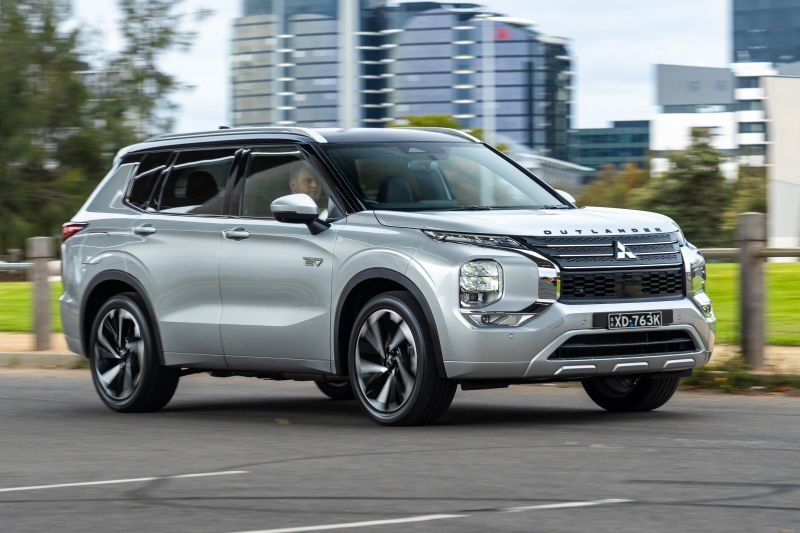
Outlander PHEV Exceed Tourer shown
Unlike a number of complicated, high-tech cars, it’s refreshing that the Outlander has remained old-school in the way it drives. This makes it easy for anyone (with a driver’s license, that is) to get behind the wheel and feel confident enough to drive anywhere without too much thought.
This old-school feel extends to the powertrain. The 2.5-litre non-turbo petrol four has been around for years now, and remains in use in this car as well as the related Nissan X-Trail, among others.
It offers an adequate amount of acceleration around town, but you won’t be winning any land speed records. If it’s punchy performance you’re after, you’d better look elsewhere.
Helping make the car feel somewhat spritely is the touchy accelerator. It caught me off guard a couple of times because it doesn’t take much throttle application to get hustling. And it does help that there’s no turbo to spool up, meaning there’s no lag and just linear, progressive acceleration instead.
Mated to this generally vanilla four-cylinder petrol engine is an equally pedestrian CVT auto. Together, they get the job done, but there’s barely any character about how they operate.
Around town, the CVT keeps engine revs as low as possible to reduce fuel consumption. At 50km/h on a flat road the engine is revving at around 1000rpm, and doesn’t feel like it’s working too hard at all.
If called upon, however, the engine picks up readily and hastily. This engine doesn’t have the best note when pushed hard, though, and the CVT makes it sound drony inside the cabin because it doesn’t shift through gears but instead holds the revs up high.
There are a range of drive modes, including a ‘Tarmac’ setting that is essentially a sport mode of sorts. It doesn’t actually make the Outlander feel any faster though, instead just revving the crap out of the poor engine a little more.
For this reason, I stuck with the regular ‘Normal’ drive mode for the majority of my testing because it felt the most natural, even though ‘Eco’ sometimes seemed appealing to reduce the touchiness of initial throttle response.
Despite being old-school, this car was surprisingly efficient in town, which just goes to show how miserly a simple four-cylinder petrol-CVT combination can be.
Having said that, though, I didn’t experience super-heavy traffic during my week of testing. If I did my observed fuel consumption figure likely would have blown out because there’s no engine idle stop/start system in this car.
Plus, for almost all my testing, it was just me and my backpack. If you use this car to its full potential, meaning having people in all seven seats or putting a load in the boot, the engine is guaranteed to struggle more and this will increase fuel consumtpion.
At lower speeds, the suspension is on the harsher side due to the large 20-inch alloy wheels. It’s much more supple in lower trim levels with the smaller 18-inch wheels.
Somehow, this Outlander manages to be firmly sprung and also under-damped. This means potholes and speed bumps transmit into the cabin, plus undulating bumps make the car feel a bit unsettled.
All that makes the car feels a little floaty and undynamic. It feels large even in low-speed bends and has a fair bit of body roll, which isn’t helped by the high centre of gravity.
However, the steering is light yet direct, making it feel nimble in tight manoeuvring scenarios like parking.
Speaking of parking, the Outlander Black Edition comes with both front and rear parking sensors. There’s also a reversing camera (but no 360-degree camera), which frustratingly isn’t mounted centrally on the tailgate, meaning the camera feed is lop-sided.
Out on the open road, this car continues to evoke big-car energy, despite being a mid-sized SUV.
The four-cylinder petrol engine is up to the task of highway and freeway touring, settling into a comfortable groove at 100-110km/h. It does have to work harder to get up to higher speeds, especially if there are more people or luggage onboard, and hills send the revs skyrocketing to 3000rpm very easily.
Even though the engine can occasionally make a bit of a racket, it’s typically whisper-quiet inside. Mitsubishi has done a great job of insulating the Outlander’s cabin from outside noises like tyre and road roar, especially given this car has low-profile tyres.
-
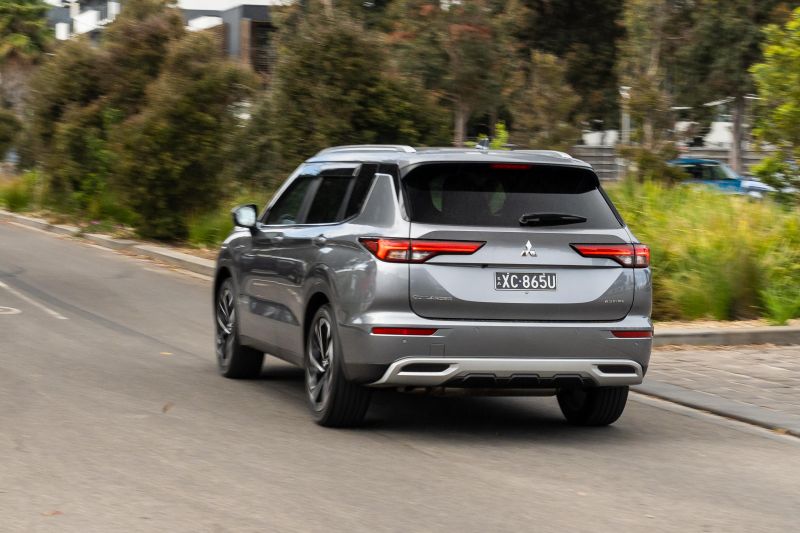
Outlander Aspire shown
The suspension continues to give this car a wallowy ride on the open road, making it feel constantly unsettled by even small road imperfections. Hopefully, this is something that can be rectified in the forthcoming mid-life facelift.
On the safety front, the adaptive cruise control system is good at managing a safe distance from the car ahead. It also doesn’t react too drastically when a car merges closely in front of you.
What this Outlander’s adaptive cruise control system lacks, however, is traffic jam assist. This means that once the cruise control brings the car to a stop, you need to apply the brake yourself to keep the car stationary.
Generally, this isn’t an issue unless you really like using adaptive cruise control in bumper-to-bumper traffic. Traffic jam assist features on Outlander Exceed variants and up, as part of the MI-PILOT driving assistance suite.
Another driver assistance feature this particular Outlander misses out on is an active lane centring function. Instead, it has a brake-based lane-keep assist system, which is intrusive and only intervenes once you’ve already gone outside the lane markings.
Lastly, there are LED headlights that are mounted in a weird spot on the front bumper, but are pleasingly bright. They’re great if you frequently travel in rural and regional areas at night, when wildlife can jump out at you.
There’s also an automatic high-beam function, which isn’t as sophisticated as adaptive high-beam, but still automatically dips the headlights to low beam when the car sees headlights or tail-lights up ahead.
To see how the Mitsubishi Outlander stacks up against its rivals, use our comparison tool
What do you get?
On test here is the mid-spec Outlander Black Edition, which is based on the LS trim level, but features a range of black trimmings, among other minor additions.
2025 Mitsubishi Outlander ES equipment highlights:
- 18-inch alloy wheels
- Automatic headlights
- Automatic high-beam
- LED headlights
- Full-size alloy spare wheel (Petrol)
- Tyre repair kit (PHEV)
- 7.0-inch digital instrument cluster
- 12.3-inch digital instrument cluster (PHEV)
- 8.0-inch touchscreen infotainment system
- 9.0-inch touchscreen infotainment system (PHEV)
- Wireless Apple CarPlay (PHEV)
- Wired Apple CarPlay, Android Auto
- DAB+ digital radio
- Cruise control
- 6-speaker sound system
- Two USB inputs
- Dual-zone climate control
- 5 drive modes
- Normal, Eco, Tarmac, Gravel, Snow (Petrol)
- 6 drive modes
- All five petrol drive modes + EV mode (PHEV only)
- Electric parking brake
- Auto hold with memory
- Keyless start
- Paddle shifters
- Driver-side window one-touch up/down
- 5 seats
- Cloth seat upholstery
- Driver’s seat manual adjustment with manual lumbar support
- Front passenger’s seat manual adjustment
- Second-row recline adjustment
- Rear seat alert function
- Mode 3 charging cable (PHEV only)
- Mode 2 AC charging cable (PHEV only)
Outlander LS adds:
- Space-saver spare wheel
- Rain-sensing wipers
- LED front fog lights
- Privacy glass
- Silver roof rails
- 9.0-inch touchscreen infotainment system
- Wireless Apple CarPlay
- Satellite navigation
- Wireless phone charger
- 2 x rear USB ports
- Keyless entry
- Leather-wrapped steering wheel
- Leather-wrapped shifter
- Auto-dimming rear-view mirror
- Seven seats
- Second-row slide and recline adjustment
Outlander Black Edition adds:
- 20-inch black alloy wheels
- Black front and rear bumper
- Black door mirrors
- Black grille
- Black headlining
- Black gearshift panel
- Microsuede seat upholstery with synthetic leather bolsters
- 6-way power driver’s seat with electric lumbar support
- B and C-pillar garnishes
- Heated front seats
- Removes roof rails
To see how the Mitsubishi Outlander stacks up against its rivals, use our comparison tool
Is the Mitsubishi Outlander safe?
The Mitsubishi Outlander and Outlander PHEV have a five-star ANCAP safety rating based on testing conducted in 2022.
| Category | Mitsubishi Outlander |
|---|---|
| Adult occupant protection | 83% |
| Child occupant protection | 92% |
| Vulnerable road user protection | 81% |
| Safety assist | 83% |
Standard safety features include:
- 8 airbags
- Autonomous emergency braking (AEB)
- Rear AEB
- Forward collision warning
- Moving object detection
- Lane departure warning
- Lane-keep assist
- Emergency lane assist
- Blind-spot monitoring
- Rear cross-traffic alert
- Adaptive cruise control
- Driver attention alert
- Traffic sign recognition
- Rear-view camera
- Front and rear parking sensors
- Rear seat alert function
Further up the range, the Outlander Exceed and Exceed Tourer petrol and PHEV variants pick up Mitsubishi’s MI-PILOT driving assistant.
This adds Traffic Jam Assist (adaptive cruise control that re-engages after a complete stop), lane-keep assist (using steering control assistance rather than front wheel braking), and speed limit assist (adaptive cruise control that matches your road speed to the posted limit).
The steering wheel in these grades features touch sensors to handle MI-PILOT engagement, and will disengage the system either when the driver’s grip is not detected, when indicators are on, or when windscreen wipers are continuously operated at their highest speed.
To see how the Mitsubishi Outlander stacks up against its rivals, use our comparison tool
How much does the Mitsubishi Outlander cost to run?
The Mitsubishi Outlander is covered by a standard five-year, 100,000km warranty, which can be extended to 10 years or 200,000km if you service within Mitsubishi’s dealer network (whichever comes first).
| Servicing and Warranty | Mitsubishi Outlander |
|---|---|
| Warranty | 5 years, 100,000km 10 years, 200,000km (extended service-activated) |
| Roadside assistance | Up to 4 years |
| Service intervals | 12 months, 15,000km |
| Capped-price servicing | 10 years, 150,000km |
| Total capped-price service cost | $4340 |
| Average capped-price service cost | $434 |
To see how the Mitsubishi Outlander stacks up against its rivals, use our comparison tool
CarExpert’s Take on the Mitsubishi Outlander
It’s clear why this mid-sized SUV has been climbing up the sales charts.
The Outlander is a comfortable crossover wagon that evokes a big-car feel in a package that’s not notably larger than many mid-sized SUV rivals. It’s confidence-inspiring to drive, and it helps that the driving experience is quiet (for the most part), intuitive and effortless.
This is also one of the few mid-sized SUVs to offer the flexibility of seven seats. While its third-row space is limited, it’s great to have in case of emergencies and doesn’t greatly impact cargo capacity in five-seat mode.
Another major benefit of this car is that it’s a relative bargain in its segment. Sure, it would be nice to have a larger touchscreen or more active safety assists, but you have to remember this car, as-tested, costs around $40-45k, and there aren’t many like-for-like rivals out there at that price.
On top of this, if you service at Mitsubishi dealers, you get a 10-year warranty, which is very good peace of mind. It’s worth noting, though, that Nissan and MG have now caught up in terms of warranty period, and stepped ahead when it comes to warranty mileage.
I have to admit I enjoyed the 2.5-litre four-cylinder petrol engine in this particular car more than I have in previous Outlanders. The PHEV powertrain is a better package overall, but it’s a lot more expensive.
Thankfully, the pure petrol powertrain still does the job just fine, though under harder acceleration it lacks character and gets drony due to the CVT. For many, though, this is unlikely be an issue.
Lastly, while the heated and suede/faux leather-trimmed seats with electric adjustment in this particular car are great, I’d personally forgo them and opt for the cheaper LS instead. You save $1750 in the process, plus you get a better ride thanks to the smaller 18-inch alloy wheels.
We also eagerly await the Outlander’s upcoming mid-life facelift because it promises to fix a number of these minor grumbles. But we’ll have to wait and see how that pans out, so stay tuned!
Interested in buying a Mitsubishi Outlander? Get in touch with one of CarExpert’s trusted dealers here
Click the images for the full gallery
MORE: Everything Mitsubishi Outlander

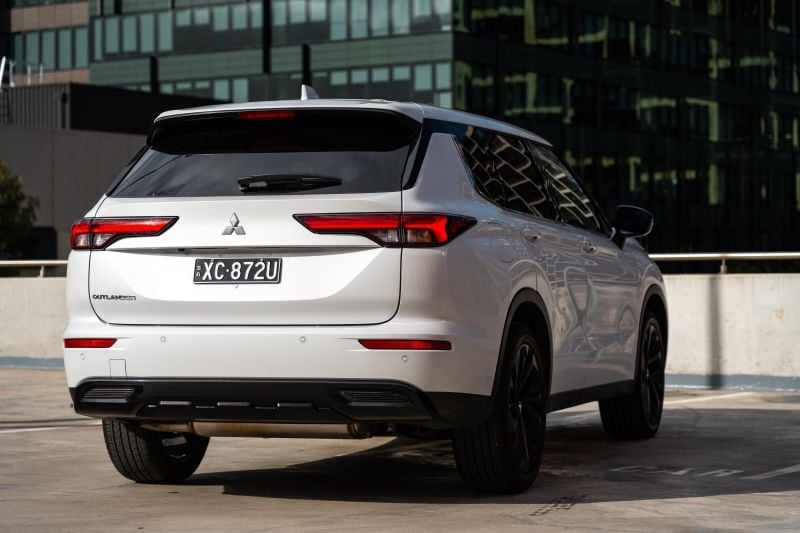
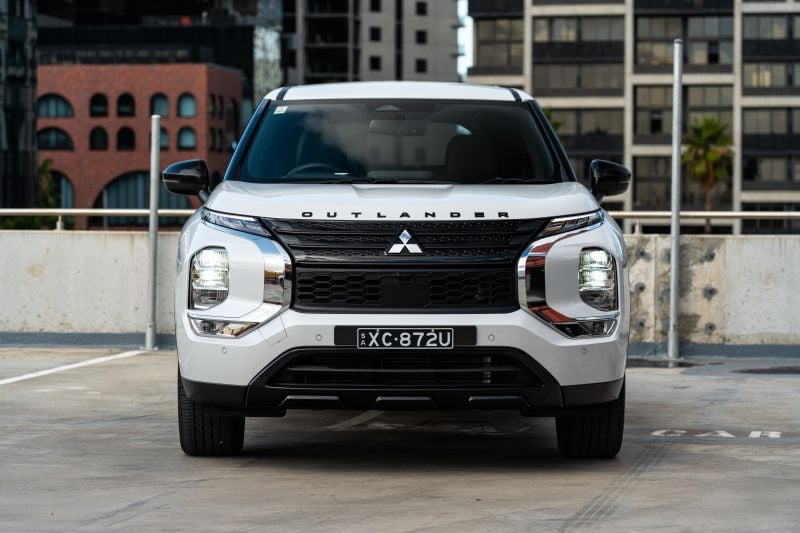
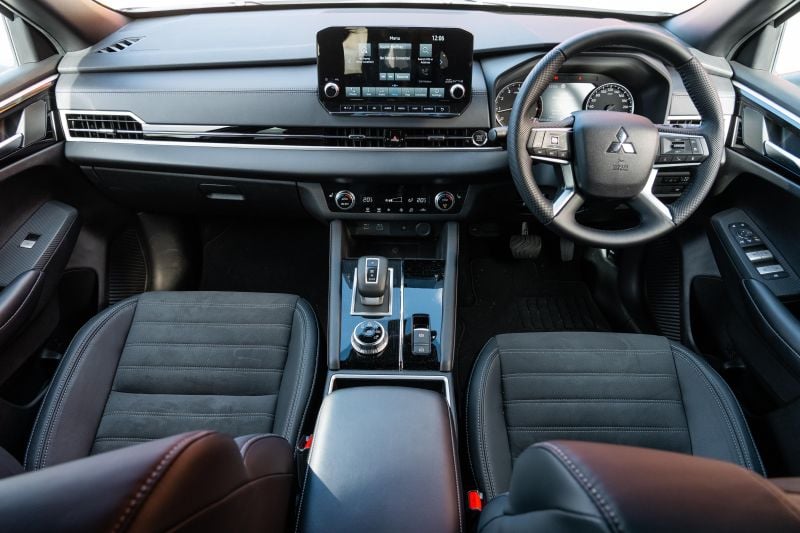
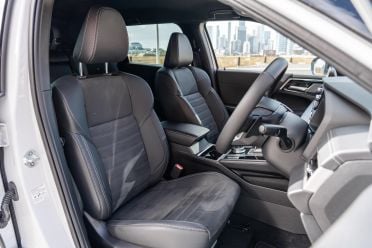
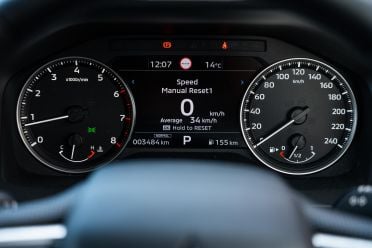
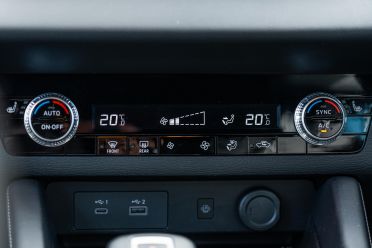
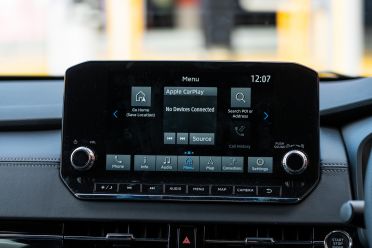
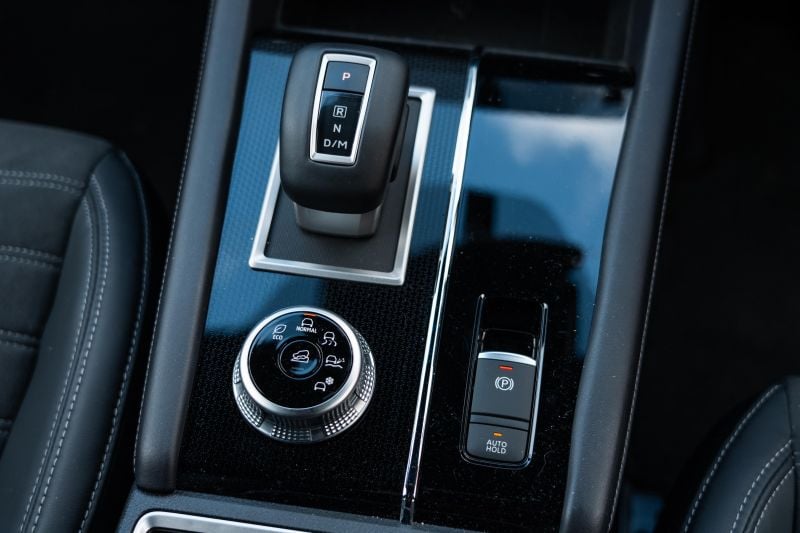
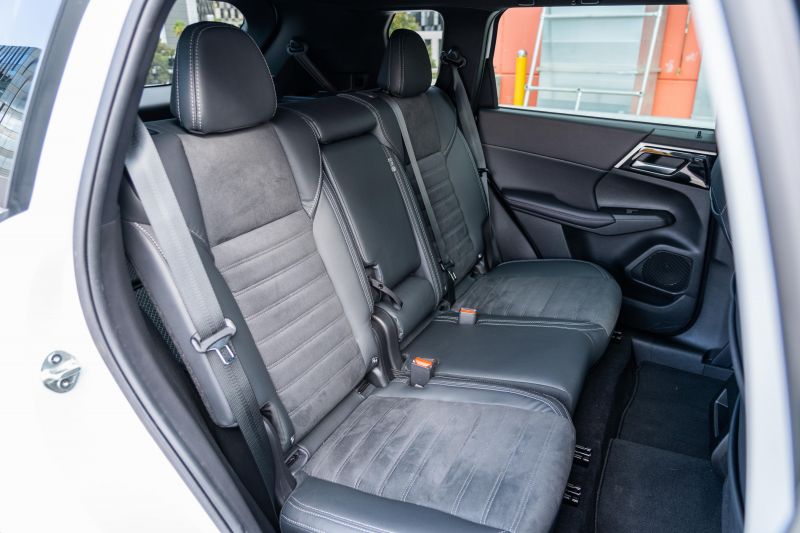
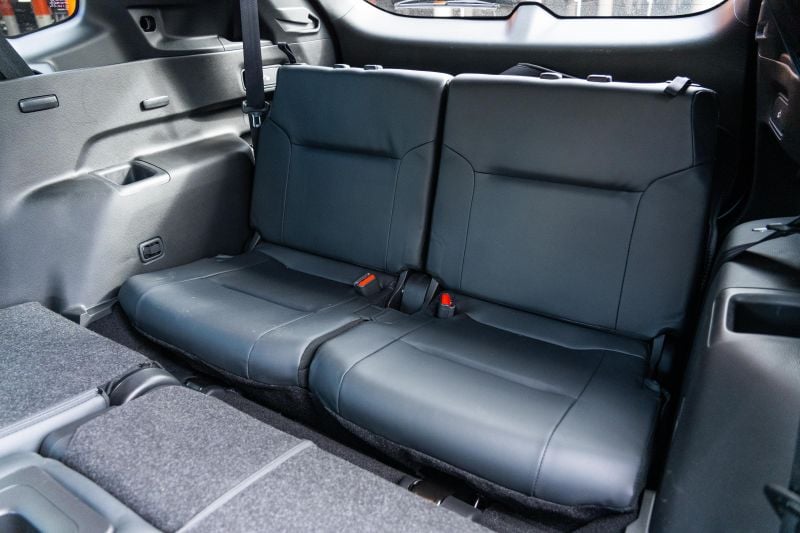
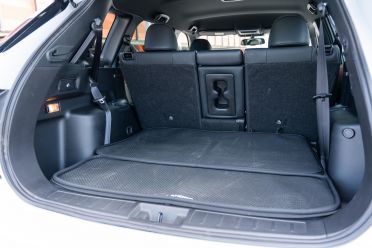
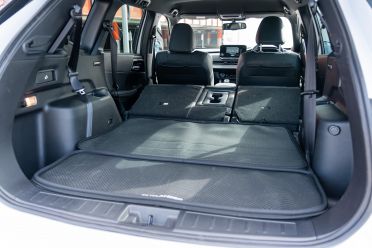
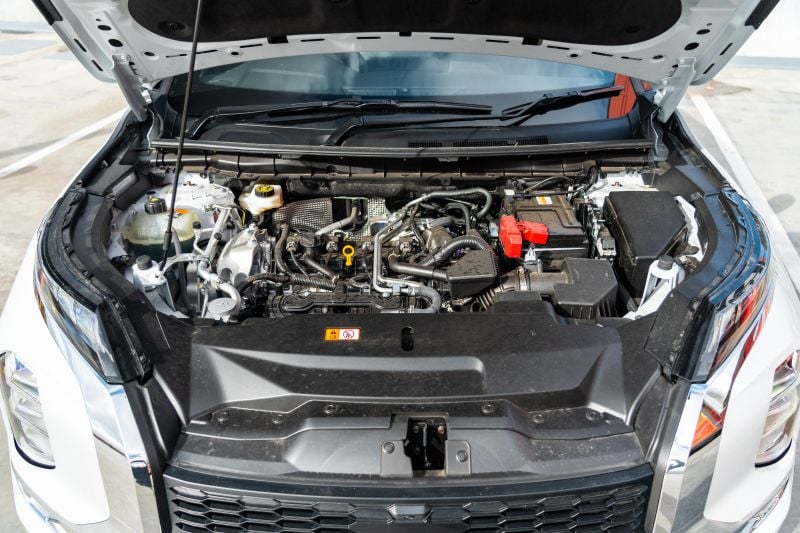
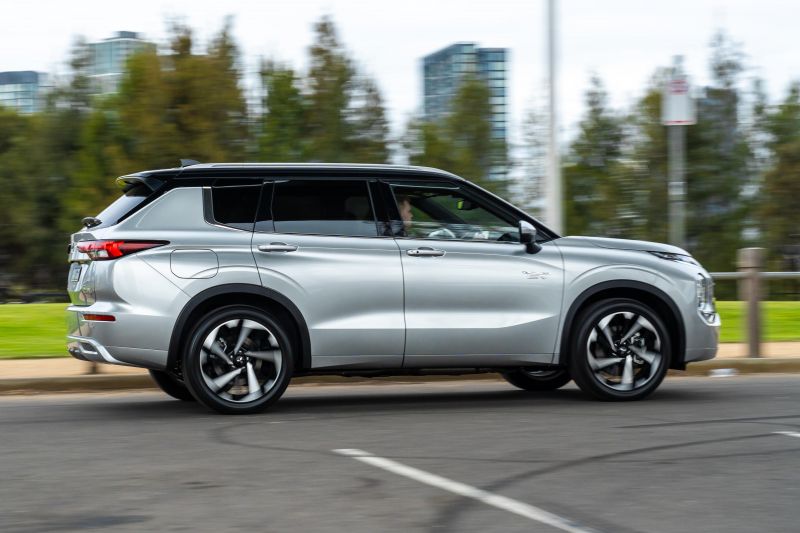
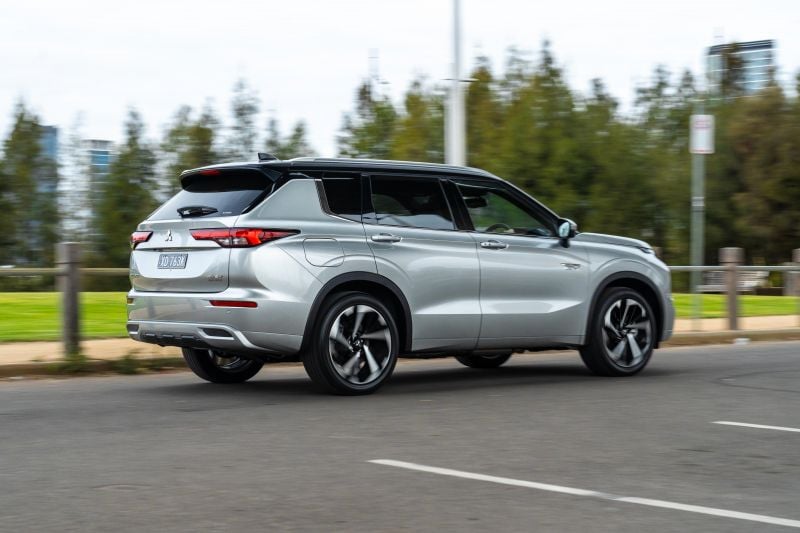
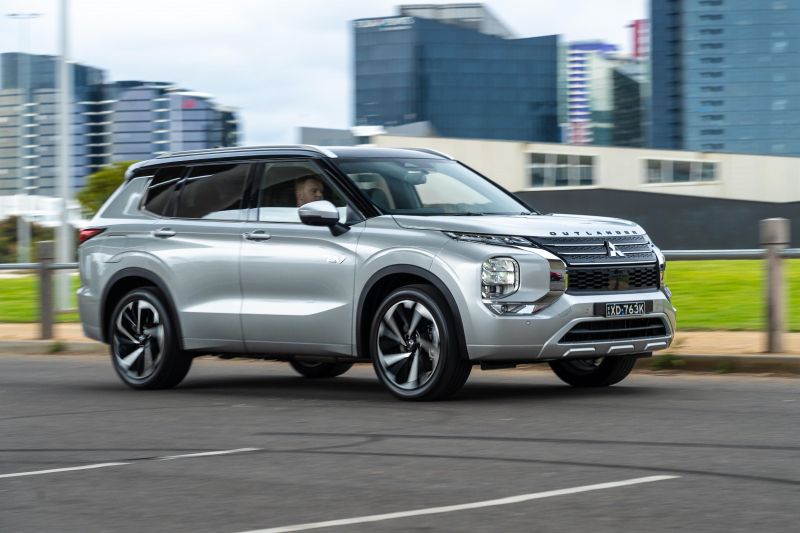
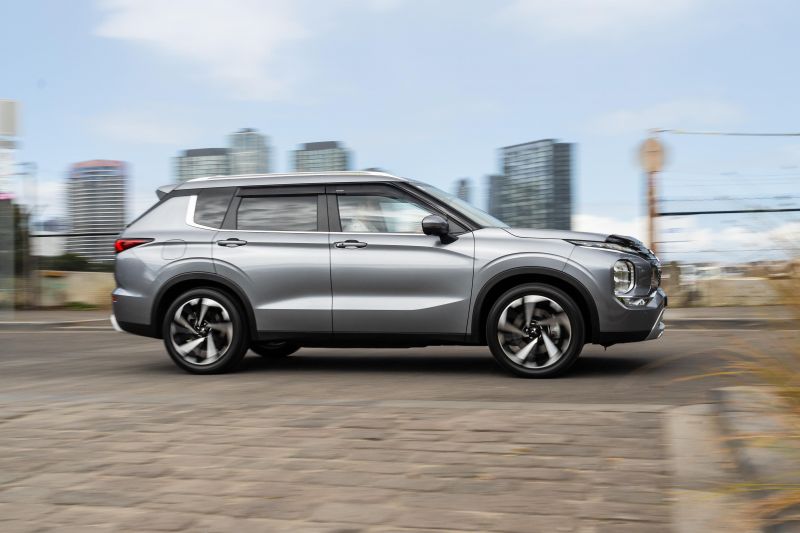
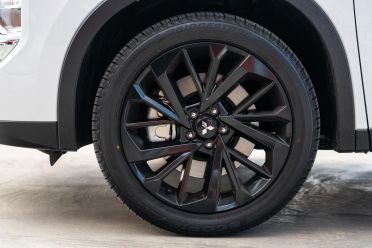
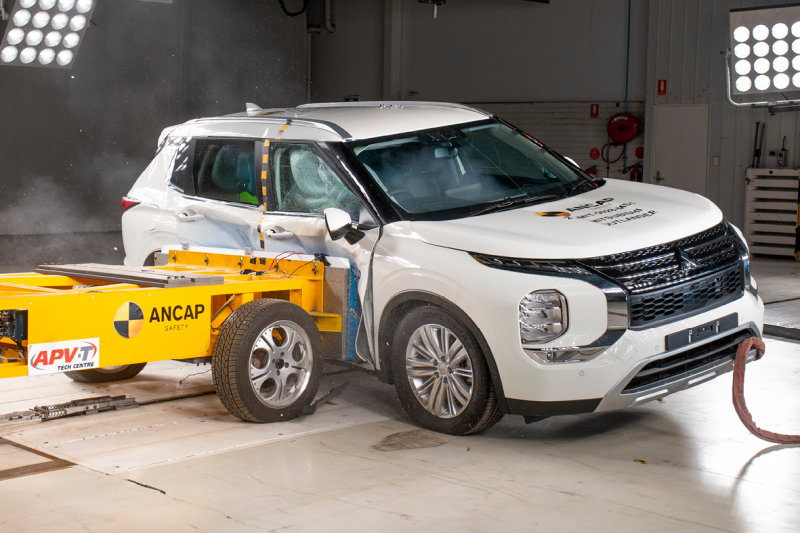
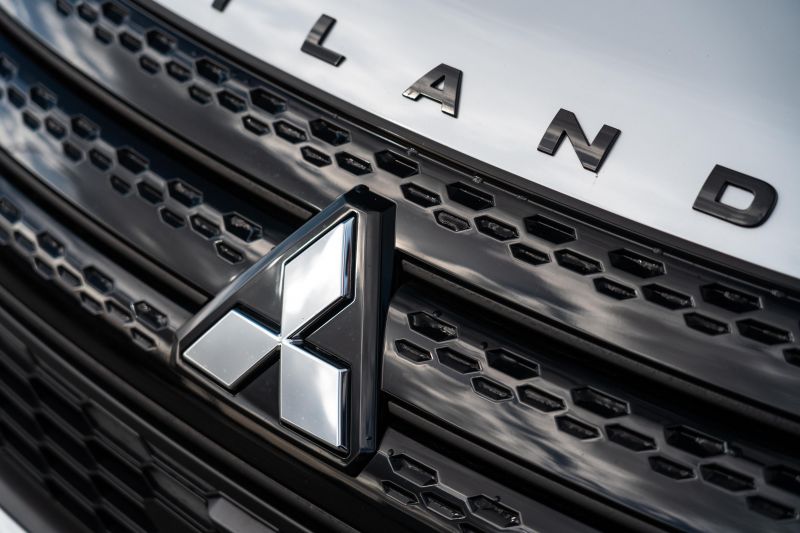
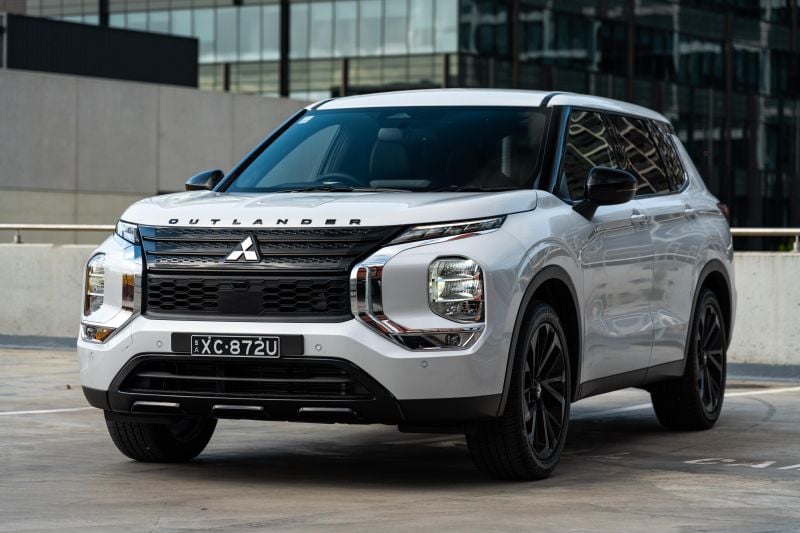
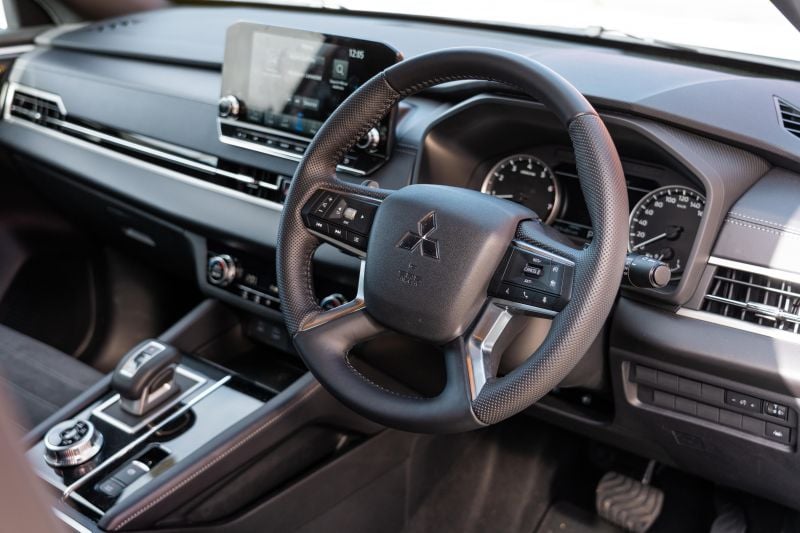
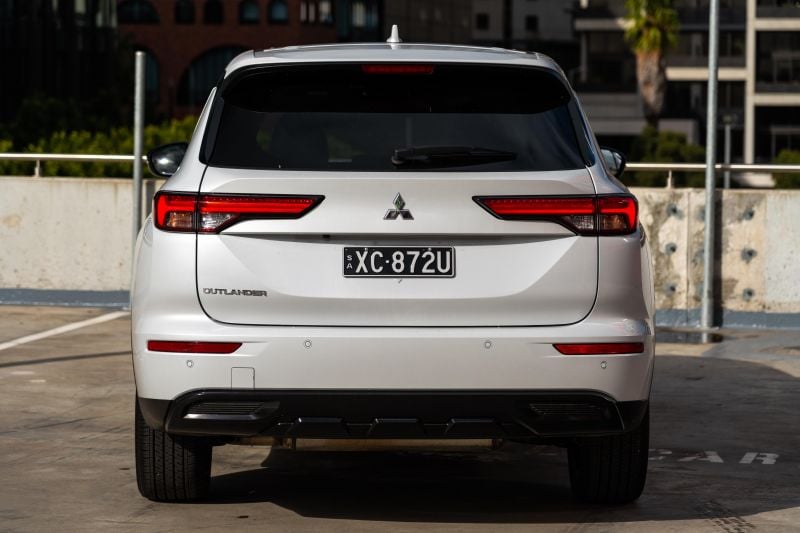










Leave a Reply